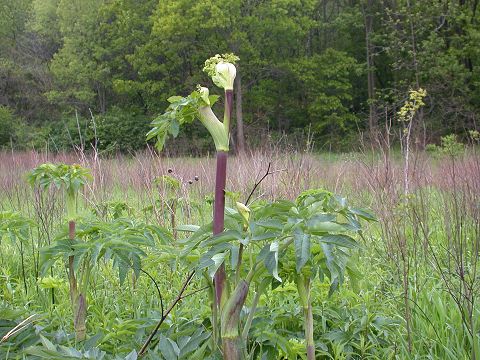

Angelica atropurpurea - (image 1 of 7)
Taxonomy
Family: Apiaceae
Habitat
Calcareous woodland, marshes, fens. Prefers flowing calcareous groundwater.
Associates
Distribution
Labrador west to MN, south to DE, WV, and IN.
Morphology
Robust biennial or perennial to 2 m. Leaves long petiolate, to 30 cm, progressively reduced in size up the stem; leaflets sharply serrate. Stems purple-tinged. Flowers in umbels to 20 cm wide, rays 20-45; fruit round and flattened, 4-6.5 mm, membranous.
Notes
Flowers May to June
Wetland Indicator: Obligate
This plant is edible and can be used like celery or candied. However, plants in this family can be confused with the extremely toxic water hemlock Cicuta maculata, and a mistake in identification can prove deadly.
References
Gleason, Henry A.
and A. Cronquist. 1991. Manual of Vascular Plants of Northeastern United States
and Adjacent Canada. Second Ed.
The New York Botanical Garden. Bronx, NY
Peterson, L. A. 1977. A Field Guide to Edible Wild Plants: Eastern and central North America.
Houghton Mifflin Company. New York, NY
Swink, F. and G.
Wilhelm. 1994. Plants of the Chicago Region.
Indiana Academy of Science. The Morton Arboretum. Lisle, Illinois.
|
© Michael Hough 2004 |